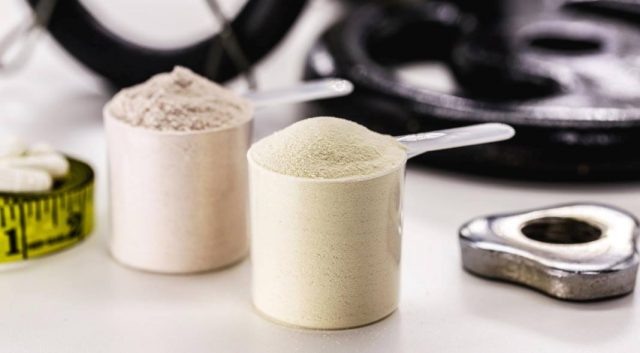Beef-based gelatin, a versatile ingredient with a wide range of culinary and industrial applications, has gained popularity due to its unique properties and numerous health benefits. Whether you find yourself in the realm of home cooking, the world of professional culinary arts, or the sphere of food production, grasping the diverse landscape of gelatin offerings on the market is paramount for achieving your intended outcomes in recipes or products. In this comprehensive guide, you will know the various kinds and selections of beef gelatin, dissect their unique attributes, and get some tips in selecting the perfect one to suit your precise requirements.
Introduction to Beef-derived Gelatin
Beef-derived gelatin is derived from the collagen found in cattle’s connective tissues and bones. It is a protein-rich substance that forms a gel-like texture when mixed with water and heated. This unique property makes it a valuable ingredient in a wide range of applications, including:
- Culinary Uses
Cooking and Baking: The gelatin is commonly used to set desserts like panna cotta, gummies, and gelatin-based candies. It can also be added to sauces, soups, and stews to enhance texture and mouthfeel.
Jellies and Jams: Gelatin is a crucial ingredient in making homemade jellies and jams, giving them a firm yet spreadable consistency.
Meat Glazing: In the culinary world, it is often used for glazing meat to achieve an attractive and glossy finish.
- Nutritional Supplements
Collagen Supplements: Beef-based gelatin is a source of collagen, which is known for its potential health benefits, including joint health, skin elasticity, and nail strength.
Protein Supplements: Because of its high amount of protein, it is used as a protein supplement in various forms, such as protein bars and drinks.
- Pharmaceutical and Industrial Applications
Capsule Manufacturing: Beef capsules are widely used in the pharmaceutical industry for encapsulating medicines and supplements.
Photography: Gelatin is used in photographic paper and film production.
Cosmetics: It can be found in cosmetics like face masks and creams due to its hydrating properties.
Types of Beef-derived Gelatin
When purchasing beef-based gelatin, you’ll encounter various types and forms. Their key distinctions are based on their bloom strength, processing methods, and additional characteristics. Here are the main types of gelatin:
- Bloom Strength
Bloom strength measures the gelling ability and strength of gelatin. It is determined by the concentration of collagen in the gelatin and is often categorized into three main types:
Low Bloom (100-200 Bloom): This type of gelatin produces soft and delicate gels. It is commonly used in desserts, fruit preparations, and pharmaceutical applications.
Mid-Bloom (200-300 Bloom): Mid-bloom gelatin creates gels with moderate strength and versatility. It is suitable for culinary and industrial applications, including confectionery, sauces, and encapsulation.
High Bloom (above 300 Bloom): High bloom gelatin yields firm gels. It is preferred for applications requiring a solid structure, such as gummy candies, marshmallows, and certain pharmaceutical products.
- Sheet or Powder
Beef-based gelatin is available in two primary forms: sheet and powder, and which of these you choose depends on your preferences.
Sheet Gelatin: Sheet gelatin comes in thin, translucent sheets. It is convenient for precise measurements and is commonly used in professional kitchens. To use sheet gelatin, you must soak it in cold water before incorporating it into your recipe.
Powdered Gelatin: Powdered gelatin is more widely available and easier to store. It can be added directly to liquids without needing pre-soaking, making it a popular choice for home cooks and food manufacturers.
- Halal and Kosher Certification
For consumers adhering to specific dietary or religious requirements, it’s important to note that some gelatin products are certified as halal or kosher. These certifications ensure that the gelatin is produced in accordance with strict dietary laws, making it suitable for a broader range of consumers.
Factors to Consider When Choosing Gelatin
Selecting the right gelatin for your specific application requires careful consideration of several factors:
- Bloom Strength Requirements
Determine the desired texture and strength of your end product. You might opt for low-bloom gelatin for delicate desserts, while high-bloom gelatin is essential for sturdy confections like gummies.
- Form and Convenience
Consider whether you prefer sheet or powdered gelatin. Sheets are more precise but require soaking, while powdered gelatin is easier to use and store.
- Dietary Restrictions
If you or your target audience have specific dietary restrictions, check for halal or kosher certification to ensure compliance with dietary laws.
- Quality and Purity
Always choose high-quality beef-derived gelatin to ensure the best recipe or product results. Look for trusted brands with a reputation for purity and consistency.
- Packaging Size
Depending on your usage volume, you may need to consider the packaging size. Smaller packages are suitable for home cooks, while industrial users may require larger bulk options.
Where to Purchase Gelatin
Beef-derived gelatin is readily available in various forms and bloom strengths through several sources:
- Local Grocery Stores
Many grocery stores carry powdered gelatin, making it accessible to home cooks. Sheet gelatin might be found in specialty stores or online.
- Online Retailers
Numerous online retailers offer beef-based gelatin products, including different bloom strengths, forms, and package sizes. This option is especially convenient for those seeking certifications like halal or kosher.
- Wholesale Suppliers
If you require bulk quantities of gelatin for industrial or commercial use, wholesale suppliers can provide cost-effective options tailored to your needs.
Beef gelatin, with its diverse applications in the culinary, pharmaceutical, and industrial realms, is a valuable ingredient that deserves careful consideration when purchasing. Understanding the various types and varieties, bloom strengths, and forms will enable you to make informed choices for your specific needs.


